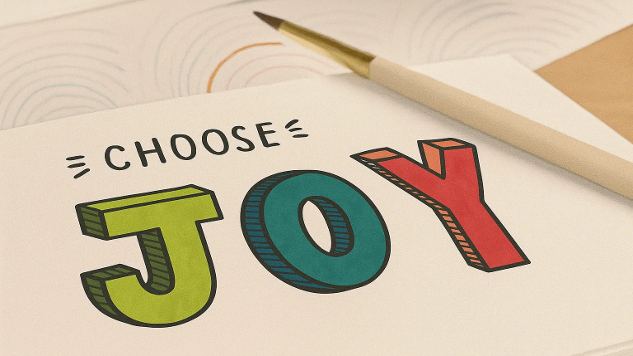
In This Article
- What is the Big Joy Project and why is it different?
- Can five minutes a day truly improve emotional health?
- Why are disadvantaged groups benefiting the most?
- How does this intervention compare to traditional programs?
- What does it mean for the future of public health?
Can 5 Minutes of Digital Joy Improve Emotional Health?
by Robert Jennings, InnerSelf.comLet’s start with a dirty little secret in the mental health world: most well-being interventions are designed for the already well-off. Yoga retreats in Costa Rica. Mindfulness apps with monthly fees. Coaches charging $200 an hour to help you feel “aligned.” Meanwhile, millions are drowning in stress, burnout, and chronic sleep deprivation, and what do they get? Maybe a brochure. Maybe a waitlist.
This is why the Big Joy Project matters. It didn't just talk about accessibility—it delivered. With over 17,000 participants from 169 countries, this wasn’t a self-help book club for the elite. It was a grassroots experiment in emotional health with a radical premise: joy, given freely and daily, could tip the scale toward well-being—even in the most strained lives.
The Big Joy Project: Microdose Happiness, Macro Impact
Here’s the setup. For one week, participants did a daily 5–10 minute “act of joy.” That’s it. These weren’t esoteric rituals or overly clinical assignments. You watched an awe-inspiring video of Yosemite. You made a gratitude list. You told someone about something you were proud of. You did something kind. These aren’t new-age tricks—they’re ancient tools of the human soul.
And yet, the numbers didn’t just budge. They leaped. Emotional well-being jumped. Positive emotions rose. People reported sleeping better, stressing less, and even feeling more in control of their happiness. This wasn’t a corporate rebrand of self-care. It was a public health measure, carried out humanely.
Who Benefited Most? Hint: Not Who You Think
The people who benefited most weren’t your typical wellness consumers. They weren’t white, affluent, or sipping turmeric lattes while journaling by candlelight. They were Black, Latinx, younger adults, folks facing financial strain, people with lower education levels, and those with lower perceived social status.
The more life had kicked them, the more they surged. The stress levels dropped most significantly among those with the least time, money, or privilege to engage in traditional well-being interventions. This isn’t just encouraging—it’s revolutionary. It throws into question the whole structure of how we “serve” mental health today.
From Dust Bowl Despair to Digital Action
In the 1930s, when the skies turned black with dust and the banks collapsed under the weight of their own greed, the American spirit didn’t just buckle—it cracked. But Roosevelt didn’t offer hollow slogans or tell people to simply “stay positive.” He rolled up the government’s sleeves and built the Civilian Conservation Corps, put people to work, and spoke directly to the public in his fireside chats. He knew the nation needed more than bread—it needed hope. And he gave people something they hadn’t had in years: a sense of agency.
But here’s what gets missed in history books: even as families scraped by with next to nothing, they still made space for joy. A shared pot of beans, a child’s laughter, a harmonica tune drifting from a front porch—these weren’t frivolous. They were emotional lifelines. Joy didn’t erase the hardship, but it reminded people they weren’t broken. It gave them the courage to face another day. Roosevelt built programs, yes—but the people built resilience. And they did it through small, consistent acts of connection and meaning.
That’s what the Big Joy Project taps into. It’s not a gimmick or a glossy wellness product wrapped in marketing fluff. It’s a modern answer to the same emotional challenge our grandparents faced: how do you hold onto your humanity when the system seems indifferent to it? And the answer, now as then, is deceptively simple—take action. A kind message, a moment of gratitude, a breath of awe. Not as a substitute for change, but as fuel for it. These aren’t soft acts. They are radical acts. In a world fraying at the seams, choosing joy—absolute, grounded, intentional pleasure—is one way we stitch ourselves back together.
Scalability vs. Snake Oil
It’s tempting to dismiss this as too small to matter. But public health has always been about scale. One person using a water filter doesn’t stop cholera—but millions using them do. One person washing hands didn’t kill the flu—but a culture shift did. Likewise, the Big Joy Project isn’t a panacea, but if millions engage, the math starts to change.
And let’s not forget—it worked without billion-dollar ad budgets, without pharmaceutical lobbying, and without locking joy behind a paywall. It’s already more transparent than most “wellness” offerings today. While some industries profit from our pain, this project quietly restored a measure of power to those who feel it the most.
Why Joy Matters in a World Selling Fear
Let’s face it—if fear were a commodity, we’d be in a golden age of profit. Turn on the news, scroll your feed, or glance at any comment section and you’ll see the business model: outrage equals engagement. Politicians demonize each other not for solutions, but for ratings. Tech algorithms serve up doom like a buffet, customized to your biases. The side effect? A population hooked on adrenaline, tribalism, and helplessness. It’s no wonder depression and anxiety are surging even as material wealth, for some, has increased.
That’s why a project like Big Joy isn’t fluff—it’s antidote. It’s resistance against a system that thrives on keeping us scared and divided. Instead of feeding the clickbait cycle, it asks us to tune into our shared humanity. Joy, gratitude, awe—these aren’t distractions. They’re counter-programming. And unlike fear, they don’t need a villain to exist. They remind us we’re more than political tribes, more than economic units, more than data points. We’re still capable of laughing, connecting, and caring—and that may be the most subversive act of all.
The very groups most battered by political division and economic exploitation—people of color, the working poor, the young—were the ones who gained the most from these micro-moments of joy. It’s as if their emotional immune systems were hungry for something true. Not sensational. Not manipulated. Just absolute, brief, human pleasure. In a world designed to keep us anxious and at odds, that’s not just healing—it’s quietly revolutionary.
The Real Revolution Might Be Emotional
Perhaps the future isn’t found in breakthroughs of AI, pills, or policies. Maybe it begins in kitchens, living rooms, on buses, and in quiet moments between strangers. Perhaps healing isn’t about programs at all—it’s about remembering we’re wired for meaning, connection, and delight.
We’ve been conditioned to believe change must be difficult, expensive, and delayed. The Big Joy Project turns that narrative on its head. It says: No, change can be fast, free, and joyful. And more importantly, it says you don’t have to wait for systems to save you. You can begin right now in five minutes.
That’s not just data. That’s dignity.
Music Interlude
About the Author
 Robert Jennings is the co-publisher of InnerSelf.com, a platform dedicated to empowering individuals and fostering a more connected, equitable world. A veteran of the U.S. Marine Corps and the U.S. Army, Robert draws on his diverse life experiences, from working in real estate and construction to building InnerSelf with his wife, Marie T. Russell, to bring a practical, grounded perspective to life’s challenges. Founded in 1996, InnerSelf.com shares insights to help people make informed, meaningful choices for themselves and the planet. More than 30 years later, InnerSelf continues to inspire clarity and empowerment.
Robert Jennings is the co-publisher of InnerSelf.com, a platform dedicated to empowering individuals and fostering a more connected, equitable world. A veteran of the U.S. Marine Corps and the U.S. Army, Robert draws on his diverse life experiences, from working in real estate and construction to building InnerSelf with his wife, Marie T. Russell, to bring a practical, grounded perspective to life’s challenges. Founded in 1996, InnerSelf.com shares insights to help people make informed, meaningful choices for themselves and the planet. More than 30 years later, InnerSelf continues to inspire clarity and empowerment.
Creative Commons 4.0
This article is licensed under a Creative Commons Attribution-Share Alike 4.0 License. Attribute the author Robert Jennings, InnerSelf.com. Link back to the article This article originally appeared on InnerSelf.com
books_happiness
Article Recap
The Big Joy Project is a 7-day digital well-being intervention that improved emotional health across a massive global sample. It delivered the most impact for people who usually get the least support—those under financial strain, lower education, and racial minorities. With just 5–10 minutes a day, it sparked meaningful change and showed scalable promise for future public health strategies.
#DigitalWellBeing #EmotionalHealth #BigJoyProject #MentalHealthMatters #OnlineWellness #ScalableHealth #JoyIntervention #PublicHealthInnovation #StressReliefNow


